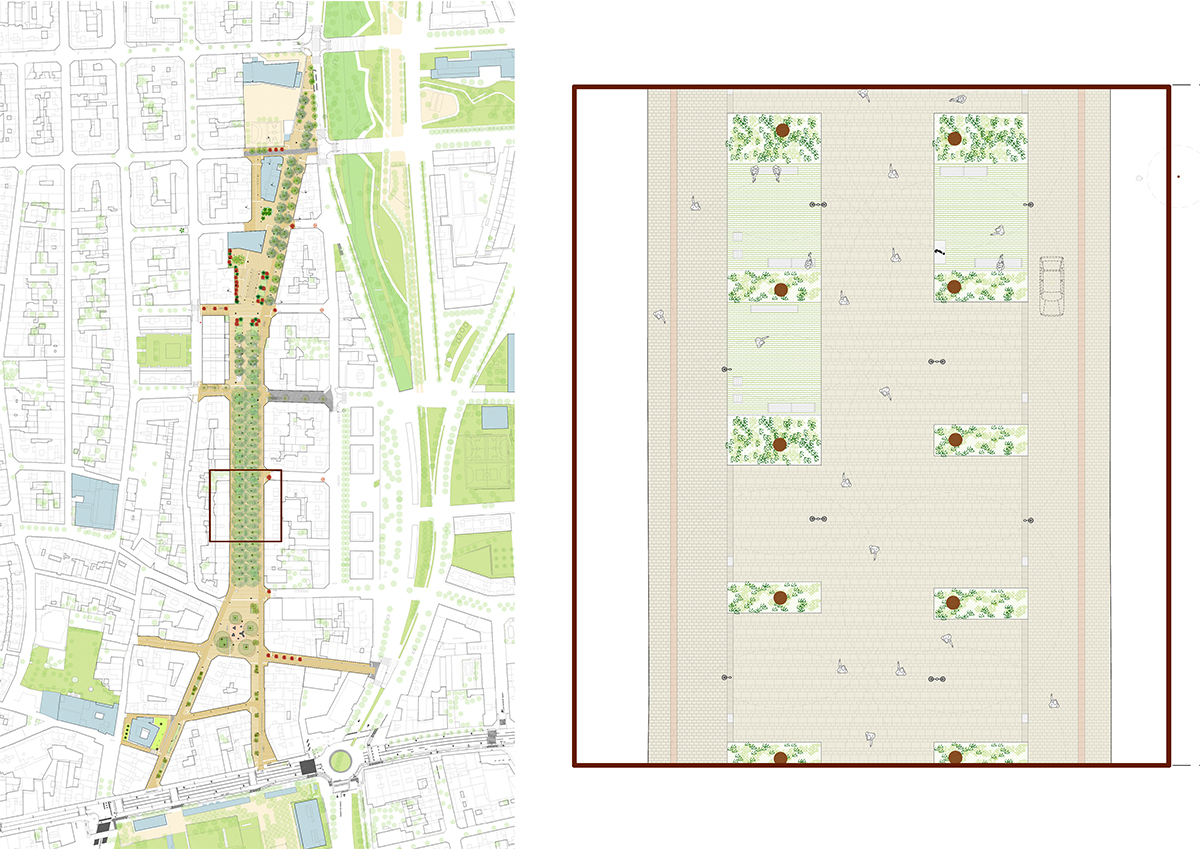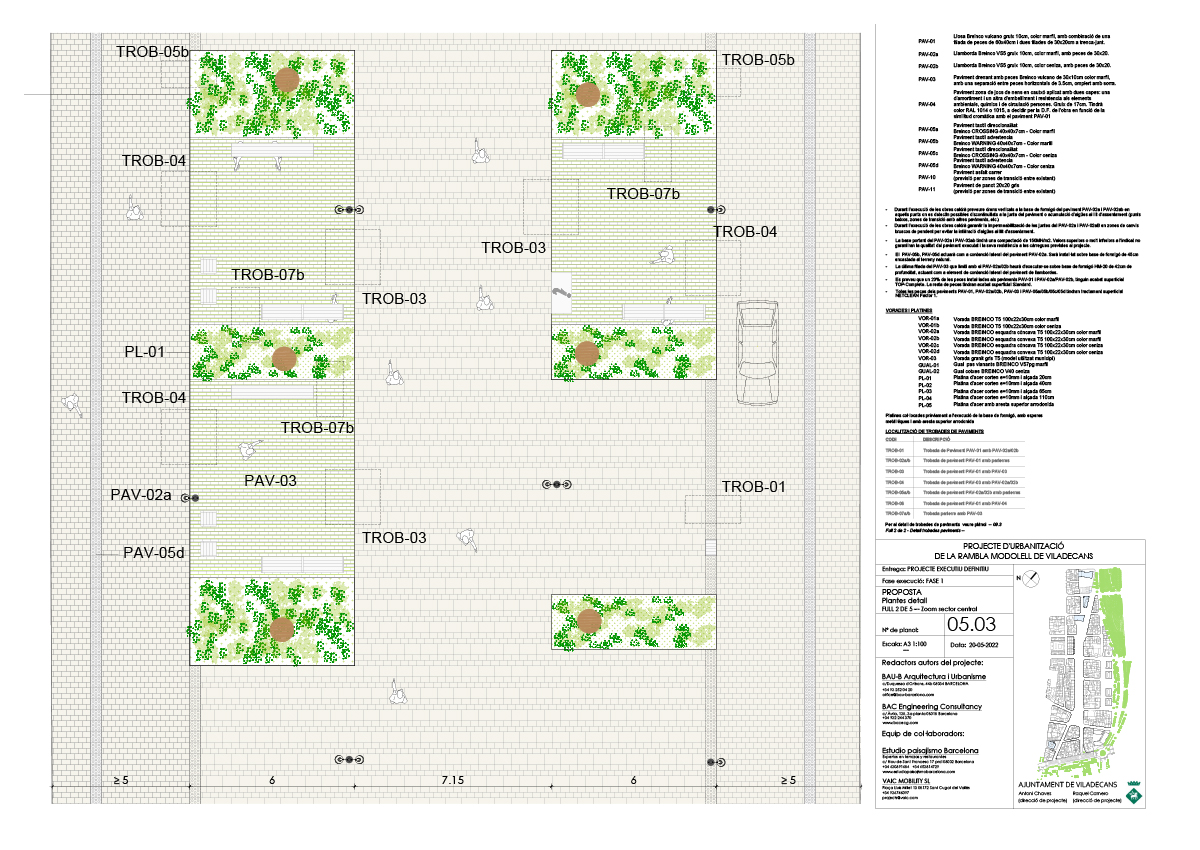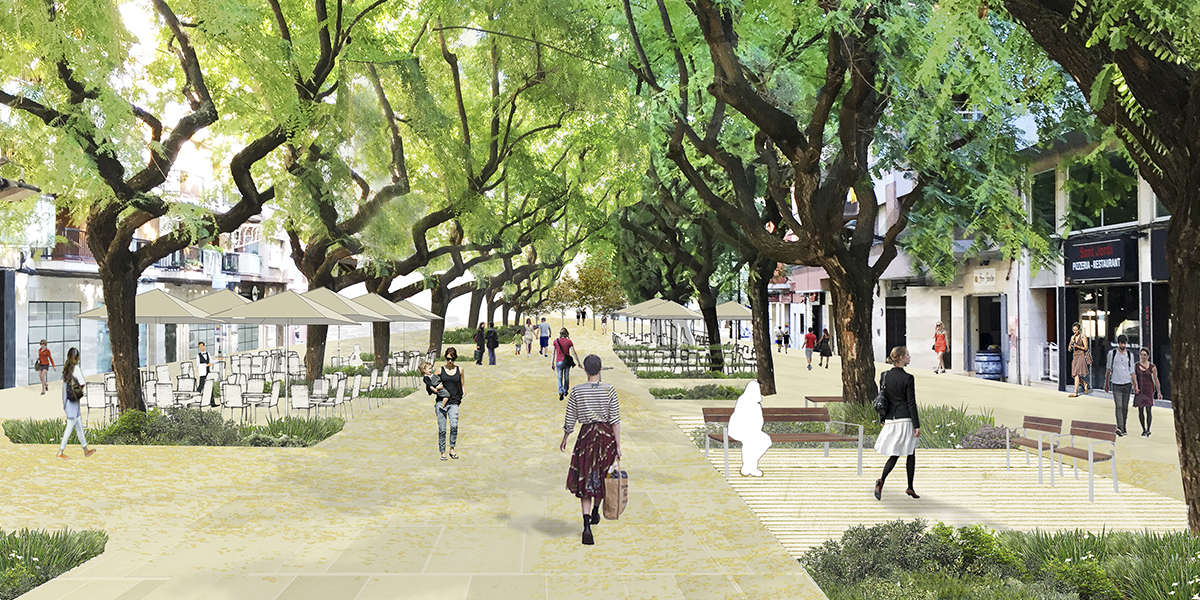Rambla Modolell
The 5 strategies for the transformation of Rambla Modolell are:
-. CONNECT LONGITUDINALLY AND TRANSVERSELY: The aim is to improve the civic connections between the Rambla and its surroundings. The longitudinal continuity of the Rambla is facilitated by extending the current section of the Rambla to the south and north. Intersections are considered as spaces of high interest in their urbanization. Adequate vehicular access to the Rambla from the transverse streets is ensured. The Rambla serves as a unified space for connection, strolling, and leisure.
-. PACIFY: This strategy focuses on the reconversion of the road system to pacify Rambla Modolell and part of the adjacent streets, providing greater comfort and safety for pedestrians. It involves two main actions: firstly, introducing a shared space with inverted priority on the Rambla, and secondly, making changes to the flow of traffic to reduce vehicular continuity. The strategy guarantees total accessibility and pedestrianization of the space, with occasional vehicle access for residents and services, but prioritizing and widening the walking areas.
-. MAKE IT DISTINCTIVE: While presenting an image of a unique axis from Avinguda de la Generalitat to Escola Àngela Roca II, the morphology of the Rambla creates a sequence of distinctive spaces: the Plaza de l'Era, the Plaza de l'Escenari (incorporating and opening up the existing space of the school to the public space), the area in front of Torre del Baró, and the space in front of Ateneu Pablo Picasso. The central section, characterized by the double row of tipuana trees, is a highly demanded space for various activities, mainly restaurant terraces.
-. NATURALIZE: The open spaces should form an ecological matrix that promotes more adaptable, flexible, and sustainable urban environments.
-. SMART: Incorporation of Information and Communication Technology (ICT) systems and technologies (Smart Cities): The introduction of a basic infrastructure, structurally integrated into the public space, that facilitates the implementation of smart projects, such as the sensorization of public space, industrialization in the provision of city services, and automation of urban processes.








The 5 strategies for the transformation of Rambla Modolell are:
-. CONNECT LONGITUDINALLY AND TRANSVERSELY: The aim is to improve the civic connections between the Rambla and its surroundings. The longitudinal continuity of the Rambla is facilitated by extending the current section of the Rambla to the south and north. Intersections are considered as spaces of high interest in their urbanization. Adequate vehicular access to the Rambla from the transverse streets is ensured. The Rambla serves as a unified space for connection, strolling, and leisure.
-. PACIFY: This strategy focuses on the reconversion of the road system to pacify Rambla Modolell and part of the adjacent streets, providing greater comfort and safety for pedestrians. It involves two main actions: firstly, introducing a shared space with inverted priority on the Rambla, and secondly, making changes to the flow of traffic to reduce vehicular continuity. The strategy guarantees total accessibility and pedestrianization of the space, with occasional vehicle access for residents and services, but prioritizing and widening the walking areas.
-. MAKE IT DISTINCTIVE: While presenting an image of a unique axis from Avinguda de la Generalitat to Escola Àngela Roca II, the morphology of the Rambla creates a sequence of distinctive spaces: the Plaza de l’Era, the Plaza de l’Escenari (incorporating and opening up the existing space of the school to the public space), the area in front of Torre del Baró, and the space in front of Ateneu Pablo Picasso. The central section, characterized by the double row of tipuana trees, is a highly demanded space for various activities, mainly restaurant terraces.
-. NATURALIZE: The open spaces should form an ecological matrix that promotes more adaptable, flexible, and sustainable urban environments.
-. SMART: Incorporation of Information and Communication Technology (ICT) systems and technologies (Smart Cities): The introduction of a basic infrastructure, structurally integrated into the public space, that facilitates the implementation of smart projects, such as the sensorization of public space, industrialization in the provision of city services, and automation of urban processes.